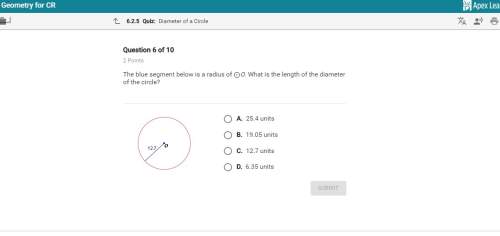DO- Nothing #1 can wiggle his ears 10
more times per minute than Do-Nothing
#2 can. If the tw...

Mathematics, 10.11.2020 20:10 graygraygray6402
DO- Nothing #1 can wiggle his ears 10
more times per minute than Do-Nothing
#2 can. If the two keep wiggling their
ears
for 5 minutes straight, they will have
wiggled a combined
total of 550 times.
How many times can Do-Nothing #2
wiggle his ears per minute?

Answers: 2


Other questions on the subject: Mathematics

Mathematics, 21.06.2019 15:00, vanessadaniellet21
Analyze the data sets below. data set a 25,25,25,26,26,26,27,28,28,29,30,31 ,31,32,33,33,34,35,35,35 data set b 25,25,25,26,26,26,26,27,27,27,27,28 ,28,29,29,30,31,31,32,34 which of the following statement are true? select all that apply. a. data set a is relatively symmetric and data set b is skewed left. b. the means of the data sets are within 3 units from eachother. c. the data sets have the same standard deviation. d. the mean of data set a is 27.95 and the mean of data set b is 30. e. the data set b has a higher standard deviation than data set a. f. the mean and median of data set a are close in value.
Answers: 3

Mathematics, 21.06.2019 21:00, KieraKimball
Emily is entering a bicycle race for charity. her mother pledges $0.90 for every 0.75 mile she bikes. if emily bikes 18 miles, how much will her mother donate?
Answers: 1

Mathematics, 21.06.2019 22:30, sonaihriley
Abucket of paint has spilled on a tile floor. the paint flow can be expressed with the function p(t) = 6(t), where t represents time in minutes and p represents how far the paint is spreading. the flowing paint is creating a circular pattern on the tile. the area of the pattern can be expressed as a(p) = 3.14(p)^2 part a: find the area of the circle of spilled paint as a function of time, or a[p(t)]. show your work. part b: how large is the area of spilled paint after 8 minutes? you may use 3.14 to approximate pi in this problem.
Answers: 2

Mathematics, 22.06.2019 00:00, boxergirl2062
Two consecutive negative integers have a product of 30. what are the integers?
Answers: 2
You know the right answer?
Questions in other subjects:

Physics, 13.01.2020 18:31




Biology, 13.01.2020 18:31








